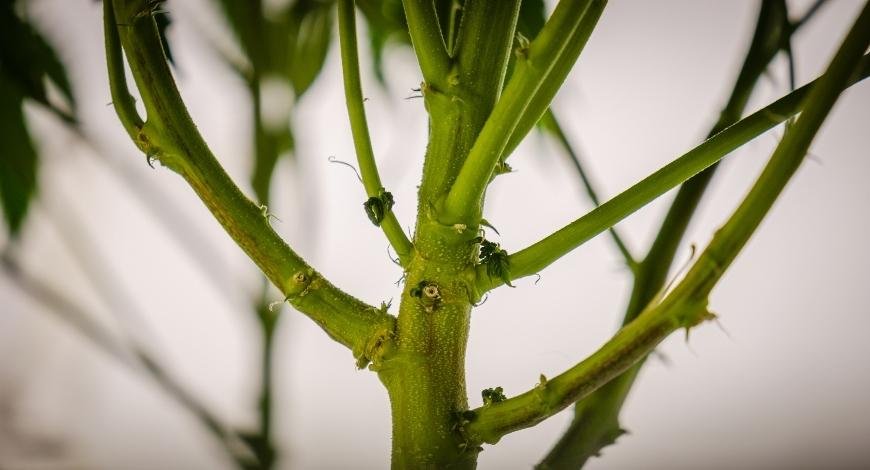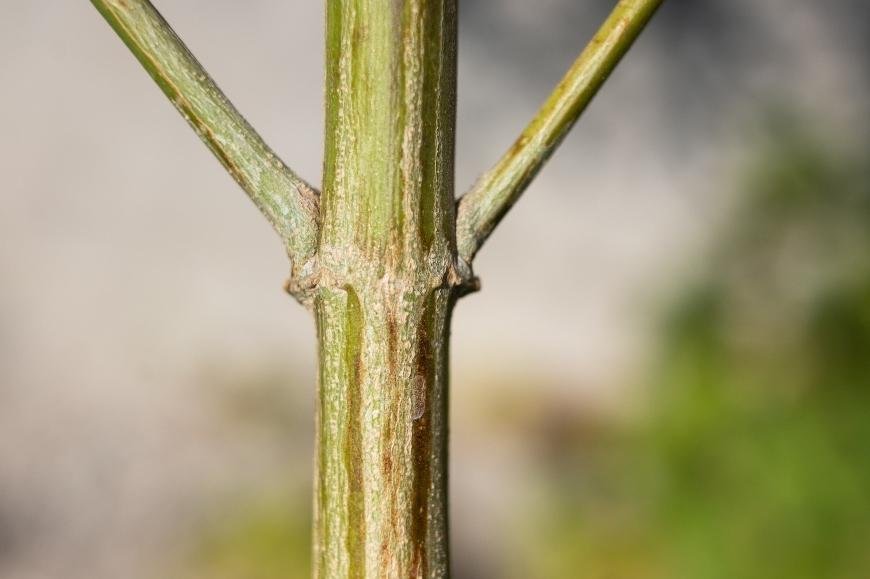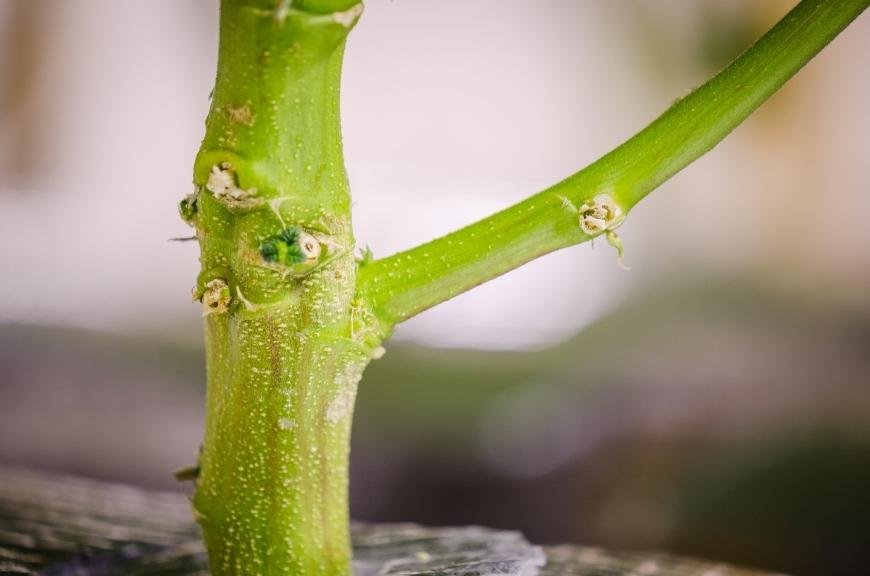Splitting Cannabis Stems: How To
Discover the art of Splitting Cannabis Stems: How To boost potency and yield with this comprehensive guide, featuring expert tips for successful stem splitting.

Splitting cannabis stems is a growing technique used by growers to increase the potency and yield of their plants. In this in-depth guide, we will explore the art of splitting cannabis stems, delving into its origins and benefits for your precious autoflowering strains.
Throughout this post, you'll learn when stem splitting should be done to maximize results and how to properly execute the process without harming your plants. We'll also discuss potential risks associated with cannabis stem splitting, as well as tips from experienced cultivators on achieving success with this method.
By understanding the intricacies of splitting stems, you can enhance both the quality and quantity of potent buds produced by your cannabis plants. So let's dive into Splitting Cannabis Stems: How To!
Table of Contents:
- What is Stem Splitting?
- The Science Behind Stem Splitting
- When Should Stem Splitting be Done?
- Benefits of Splitting Cannabis Stems
- Risks of Splitting Cannabis Stems
- Tips for Successful Stem Splitting
- Frequently Asked Questions Splitting Cannabis Stems: How to
- Conclusion
What is Stem Splitting?
Stem splitting, also known as stem cracking, is a technique used by cannabis growers to increase yields and produce denser buds. This method involves making a small cut in the stem of the plant, which encourages it to redirect more nutrients and energy towards its colas (flowering sites). As a result, cannabis plants treated with this technique can produce larger and more potent buds.
This process should be used in conjunction with other training techniques such as topping or low-stress training (LST) for optimal results. However, caution must be exercised when performing stem splitting since improper execution may cause damage to the plant or even kill it. In this section, we will explore what exactly stem splitting entails and how it benefits your cannabis plants.
The Science Behind Stem Splitting
When you split a cannabis stem correctly during its vegetative phase of growth, you create mild stress on the plant that triggers its natural defense mechanisms. The response from the plant leads to an increased production of secondary metabolites like cannabinoids (THC, CBD), terpenes (aroma compounds), and flavonoids (antioxidants).
- Cannabinoids: These are chemical compounds found in cannabis that interact with receptors in our body's endocannabinoid system (ECS) producing various effects such as relaxation or pain relief.
- Terpenes: Terpenes give each strain its unique aroma profile while also contributing to their therapeutic properties through the entourage effect.
- Flavonoids: These are plant compounds that contribute to the color, taste, and aroma of cannabis while also providing antioxidant properties.
Stem splitting is an important technique to understand when growing cannabis as it helps promote healthy and robust growth. Determining the optimal time for stem splitting can be critical, so let's take a closer look.

When Should Stem Splitting be Done?
Timing is crucial when it comes to stem splitting. It should only be done during the vegetative phase of cannabis growth, as this is when the plant has enough time to recover and redirect its energy towards producing larger and denser buds. Performing stem splitting too early or late in the growth cycle can cause unnecessary stress on your plants and potentially harm them.
The Vegetative Phase
The veg stage of cultivation usually takes anywhere from four to eight weeks, depending on the cannabis strain. This stage is characterized by rapid growth, with leaves and branches developing quickly. During this time, plants focus their energy on growing taller and wider rather than producing flowers (buds). As a result, it's an ideal period for implementing various training techniques like Low-Stress Training (LST), topping or even stem splitting.
Avoiding Flowering Stage
You must avoid performing stem splitting during the flowering stage since your plants will be focusing their resources on bud production at that point. Attempting to split stems during this delicate period may lead to stunted flower development or other issues that could negatively impact yields.
- Prioritize Timing: To maximize benefits from stem splitting while minimizing risks, aim to perform this technique about two weeks before switching your light schedule from 18 hours of light per day down to 12 hours - which triggers flowering in photoperiod strains.
- Maintain Plant Health: Ensure that your cannabis plants are healthy before attempting any form of high-stress training such as stem-splitting. A strong, healthy plant will recover more quickly and be better equipped to handle the stress of this technique.
By carefully timing your stem splitting efforts during the vegetative phase, you can boost yields and produce denser buds without causing unnecessary harm to your cannabis plants. Remember that patience is key - don't rush into stem splitting too early or late in the growth cycle.
How to Split Cannabis Stems
Splitting cannabis stems is a simple yet delicate process that requires attention and care. To ensure the best results, follow these steps:
- Select the right time: As mentioned earlier, stem splitting should only be done during the vegetative phase of growth. This allows enough time for the plant to recover from any stress caused by this technique.
- Choose your tools wisely: Use sharp scissors or pruning shears when making cuts in order to minimize damage to the plant's vascular system. Clean your cutting tool with rubbing alcohol before use to prevent infection.
- Determine where to split: Identify a section of the main stem that is approximately one-third up from its base. This area usually has less branching and will allow you better access while performing this technique.
- Create an incision: Carefully make a small cut into the stem at your chosen location using your clean cutting tool. Create a shallow slit, no longer than 0.25 inches and not deeper than half an inch, in the stem at your chosen point. Be cautious not to cut too deep as it can cause irreparable damage or even kill your plant.
- Gently separate and support: After creating an incision, gently pry apart both sides of it using a sterile object such as tweezers or chopsticks wrapped in tape. Once separated, insert something like a toothpick or matchstick between them so they remain open slightly (about 1/8 inch). This will allow for the redirection of nutrients and energy to the colas.
- Monitor your plant: Keep a close eye on your cannabis plant after splitting its stem. Keep an eye out for any signs of distress or contamination, such as wilting foliage or discoloration, and act quickly to prevent further harm. If you notice any issues, address them immediately to prevent further damage.
Splitting cannabis stems can be a great way to improve the quality of your buds and increase yield. Considering the advantages of dividing cannabis stems, let us consider some of the potential benefits.
Benefits of Splitting Cannabis Stems
Splitting cannabis stems can provide numerous benefits to growers who are looking for ways to maximize their yields and produce denser, more potent buds. Some of the key advantages include the following:
- Increased nutrient uptake: By splitting the stem, you encourage the plant to redirect more nutrients and energy towards its colas. This results in larger, healthier buds that pack a punch when it comes time for harvest.
- Better stress response: Just like other high-stress training techniques such as topping or super cropping, stem splitting can help your plants develop a stronger resistance against potential threats like pests or diseases. When done correctly during the vegetative phase, this technique encourages your plants to grow even stronger than before.
- Denser bud production: As mentioned earlier, one of the main goals behind stem splitting is promoting denser bud growth on your cannabis plants. With proper care and attention after performing this technique, you'll likely notice an increase in both yield quantity and quality come harvest time.
- Potency boost: Along with increased size and density comes improved potency levels in your final product. Thanks to enhanced nutrient distribution throughout your plant's vascular system following a successful split stem procedure; cannabinoids such as THC will be produced at higher concentrations within each cola.
To further enhance these benefits while minimizing risks associated with stem splitting (which we'll discuss later), consider combining this technique with other proven methods like low-stress training (LST) or Screen of Green (SCROG) setups. By implementing multiple strategies, you'll be well on your way to maximizing the potential of your cannabis plants and reaping the rewards come harvest time.
Risks of Splitting Cannabis Stems
Before attempting stem splitting, it's important to be aware of the potential risks and damage that could occur if done incorrectly or at an inappropriate time. Incorrect or untimely stem splitting can lead to a detrimental outcome for your cannabis plants.
Potential Damage to Plant Vascular System
One significant risk when performing stem splitting is accidentally damaging the plant's vascular system. The xylem and phloem, which are responsible for the conveyance of water, minerals, and sugars throughout the plant's body, can be detrimentally affected if too much is taken away when splitting the stem. This damage may lead to reduced nutrient flow and ultimately impact bud development or even kill your plant.
Infection Risk
Making a cut in your cannabis plant also opens up an entry point for pathogens like bacteria and fungi. These harmful microorganisms can cause infections that may weaken or destroy your crop entirely. To minimize this risk, always ensure that you use sterilized cutting tools when performing stem splitting.
Tips for Sterilizing Cutting Tools:
- Clean scissors or pruning shears with soap and water before using them on your plants.
- Dip cutting tools in rubbing alcohol (isopropyl alcohol) or hydrogen peroxide solution as an extra precautionary measure against infection-causing microbes.
- Avoid touching other surfaces after sterilization - only touch clean gloves until they come into contact with the intended cutting area on the cannabis stem.
Stress-induced Hermaphroditism
Cannabis plants have a natural defense mechanism against stress, which can sometimes cause them to develop both male and female reproductive organs. This phenomenon is known as hermaphroditism. While stem splitting is a form of controlled stress, if done improperly or combined with other high-stress techniques, it may lead to hermaphrodite plants that produce seeds instead of buds.

Tips for Successful Stem Splitting
Stem splitting is a valuable technique to enhance your cannabis plant's growth and yield, but it requires precision and care. Follow these tips to ensure successful stem splitting without causing damage to your plants:
- Choose the right time: As mentioned earlier, only perform stem splitting during the vegetative phase of growth. This allows the plant enough time to recover from any stress caused by the process.
- Select appropriate tools: Use sharp scissors or pruning shears when making cuts in the stems. Dull blades can cause unnecessary damage and make it harder for the plant to heal properly. Check out this guide on cannabis pruning tools for more information.
- Avoid cutting too deep: Be cautious not to cut too far into the stem as this can harm its vascular system, which transports nutrients throughout the plant. A shallow cut should suffice - around one-third of its diameter is ideal.
- Maintain cleanliness: Cleanliness is crucial when performing any type of cannabis training technique, including stem splitting. Ensure that your hands and tools are sanitized prior to beginning; you may even opt to sterilize them using rubbing alcohol. This helps prevent introducing bacteria or fungi that could lead to infections in your plants.
- Promote healing after split: After successfully completing a split, consider using some form of support like tape or cable ties loosely wrapped around both sides of split area. This will help maintain stability while also allowing room for swelling as healing occurs over next few days following procedure. Additionally, applying organic honey or aloe vera gel on cut area can promote faster healing by providing natural antiseptic properties.
- Monitor your plants closely: Keep an eye on your cannabis plants after performing stem splitting. Watch for any signs of stress, infection, or other issues that may arise due to the technique. If you notice anything concerning, address it promptly to ensure the health and success of your plants.
By following these tips and exercising caution when performing stem splitting, you can maximize its benefits while minimizing potential risks. This will lead to healthier cannabis plants with increased yields and denser buds - all thanks to this simple yet effective training technique.
Frequently Asked Questions Splitting Cannabis Stems: How to
When should I split my cannabis stem?
You should split your cannabis stem during the last week of flowering, usually 5-7 days before harvest. This timing allows the plant to recover from stress and helps improve potency and yield.
Does stem splitting work for cannabis?
Yes, stem splitting works for cannabis plants. It is a technique used by growers to increase resin production, leading to higher THC levels and improved overall quality of buds.
What does stem splitting do?
Stem splitting causes mild stress on the plant which triggers its natural defense mechanism. As a result, it produces more resin as protection against potential threats or damage, enhancing cannabinoid content in flowers.
What are the best cannabis trimming methods?
- Wet trimming
- Dry trimming
- Sugar leaf trim
- Manicuring
What happens if you defoliate cannabis too much?
If you defoliate your cannabis plants too much, they may experience stunted growth or reduced yields due to insufficient energy production from photosynthesis. Over-defoliation can also cause stress, making the plant more susceptible to pests and diseases.
Conclusion
Splitting cannabis stems can be a great way to boost yields and produce denser buds, but it is important to understand the technique correctly before attempting it. It should only be done during the vegetative phase of growth and with caution. When done properly, splitting cannabis stems can result in significant benefits for growers who are looking for bigger and more potent buds. As long as you follow these guidelines on how to split cannabis stems carefully, you will likely find success with this training method.



























































































































